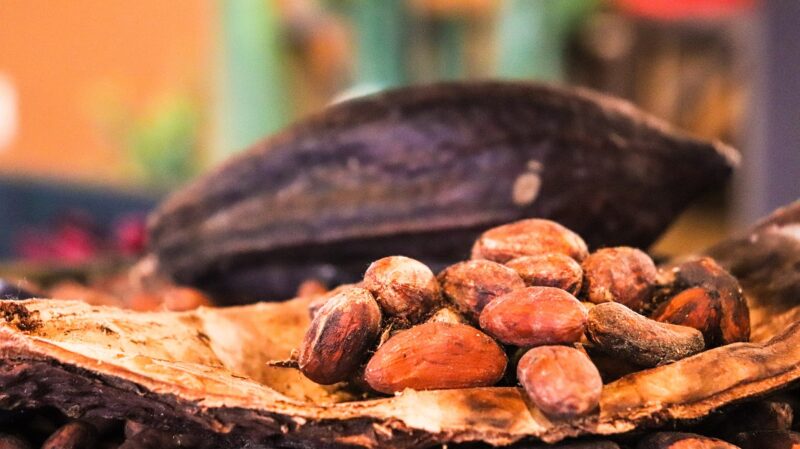How Chocolate Origin and Cacao Percentages Affect the Overall Flavor
November 11, 2024

Chocolate is more than just a delightful treat; it’s a complex gastronomic experience shaped by numerous elements. Among the most significant factors influencing chocolate’s flavor are its origin and the percentage of cacao used in its formulation. In this article, we will delve deep into how these elements affect chocolate’s taste, aroma, and overall quality, guiding you through a structured exploration of the chocolate world.
1. Understanding Cacao: The Heart of Chocolate
Cacao, the key ingredient in chocolate, originates from the seeds of the Theobroma cacao tree. These seeds are processed to create cacao liquor, cocoa butter, and cocoa powder – the fundamental components of chocolate. The flavor profile of chocolate starts with the origin of the cacao beans, as each region imparts distinct characteristics due to varying growing conditions, soil types, and farming practices.
1.1 Cacao Varieties
There are three main varieties of cacao:
- Criollo: Known for its delicate and nuanced flavors, Criollo is considered the “fine flavor” cacao, but it is also the most challenging to cultivate and prone to disease.
- Forastero: More robust and higher yielding, Forastero is often used in mass-produced chocolate and has a stronger, sometimes more bitter flavor profile.
- Trinitario: A hybrid of Criollo and Forastero, Trinitario brings together the strengths of both varieties and is known for its complex flavor profiles, often offering a balance of fruity and floral notes.
Understanding these varieties can help chocolate enthusiasts appreciate why certain chocolates taste differently based on their origins.
2. The Impact of Cacao Percentage
The cacao percentage listed on chocolate packaging indicates the proportion of cacao beans used relative to other ingredients like sugar and dairy. Understanding cacao percentages is vital for distinguishing between different types of chocolate and their respective flavor profiles.
2.1 Dark Chocolate
Dark chocolate typically contains 70% or more cacao, boasting a rich and intense flavor. The higher the cacao percentage, the less sugar is added, which can enhance the natural bitterness of chocolate. Coupled with flavor notes derived from its origin and processing, high-percentage dark chocolate can be complex, with tasting notes ranging from fruity, nutty, and earthy to floral and spicy.
For instance, a dark chocolate made from Ecuadorian Criollo may have bright cherry notes, while one from Madagascar might showcase citrus and berry flavors.
2.2 Milk Chocolate
Milk chocolate typically contains between 30% and 50% cacao. With the addition of milk and sugar, the flavors are often creamier and sweeter, which can mask some of the more subtle notes present in high-cacao dark chocolate. Generally, milk chocolate is less complex in flavor, but with high-quality sources, one can still detect nuances based on the origin of the cacao.
2.3 White Chocolate
While white chocolate technically isn’t chocolate (it contains no cacao solids), it’s made with cocoa butter and often incorporates sugar and milk. As a result, white chocolate lacks the characteristic flavors of cacao and relies heavily on the quality of the cocoa butter used.
3. Geographic Flavor Profiles
The region where cacao is grown significantly influences its flavor; various geographical areas produce beans that offer unique taste characteristics. Let’s explore a few prominent cacao-producing countries and the flavor profiles they offer:
3.1 Venezuela
Known for high-quality Criollo beans, Venezuelan chocolate presents a flavor profile rich in floral and fruity notes, balanced with a touch of nuttiness and sweetness.
3.2 Ghana
Ghanaian cacao predominately consists of Forastero beans, resulting in chocolate that is typically robust, earthy, and bittersweet, with notes of dark fruits.
3.3 Madagascar
Renowned for its fruity profile, Madagascar chocolate often features citrus and berry notes, thanks to the unique fermentation processes employed.
4. The Chocolate-Tasting Experience
To fully appreciate the interplay of cacao origin and percentage in chocolate, it’s essential to understand how to taste chocolate properly. Here’s a step-by-step guide:
4.1 Observe the Appearance
High-quality chocolate should have a smooth, shiny surface indicative of good tempering. Look for an even color without any white streaks or spots, which could hint at poor storage or quality.
4.2 Smell the Aroma
Before tasting, take a moment to inhale the chocolate’s aroma. This sensory experience can reveal hidden notes that will emerge as you taste. Chocolate can display a range of olfactory flavors from fruity and nutty to floral and spicy.
4.3 Taste the Chocolate
Allow the chocolate to melt on your tongue, observing the texture as it coats your palate. Pay attention to the initial flavors, secondary notes, and the finish. Good-quality chocolate should have a lingering taste that evolves as you savor it.
5. Conclusion: A Journey Through Chocolate’s Complexity
The intricate world of chocolate is a reflection of the cacao’s origins, varieties, and percentages. By understanding how these factors interplay, chocolate lovers can deepen their appreciation and enhance their tasting experiences. Whether you prefer high-percentage dark chocolate with its complex profile or the creaminess of milk chocolate, the key is to enjoy the journey of discovery that chocolate offers.
Next time you savor a piece of chocolate, take a moment to reflect on where it came from and how its cacao content contributes to its amazing flavor. This beautiful confectionery art invites exploration and offers endless possibilities for those willing to delve deeper into the world of chocolate.







